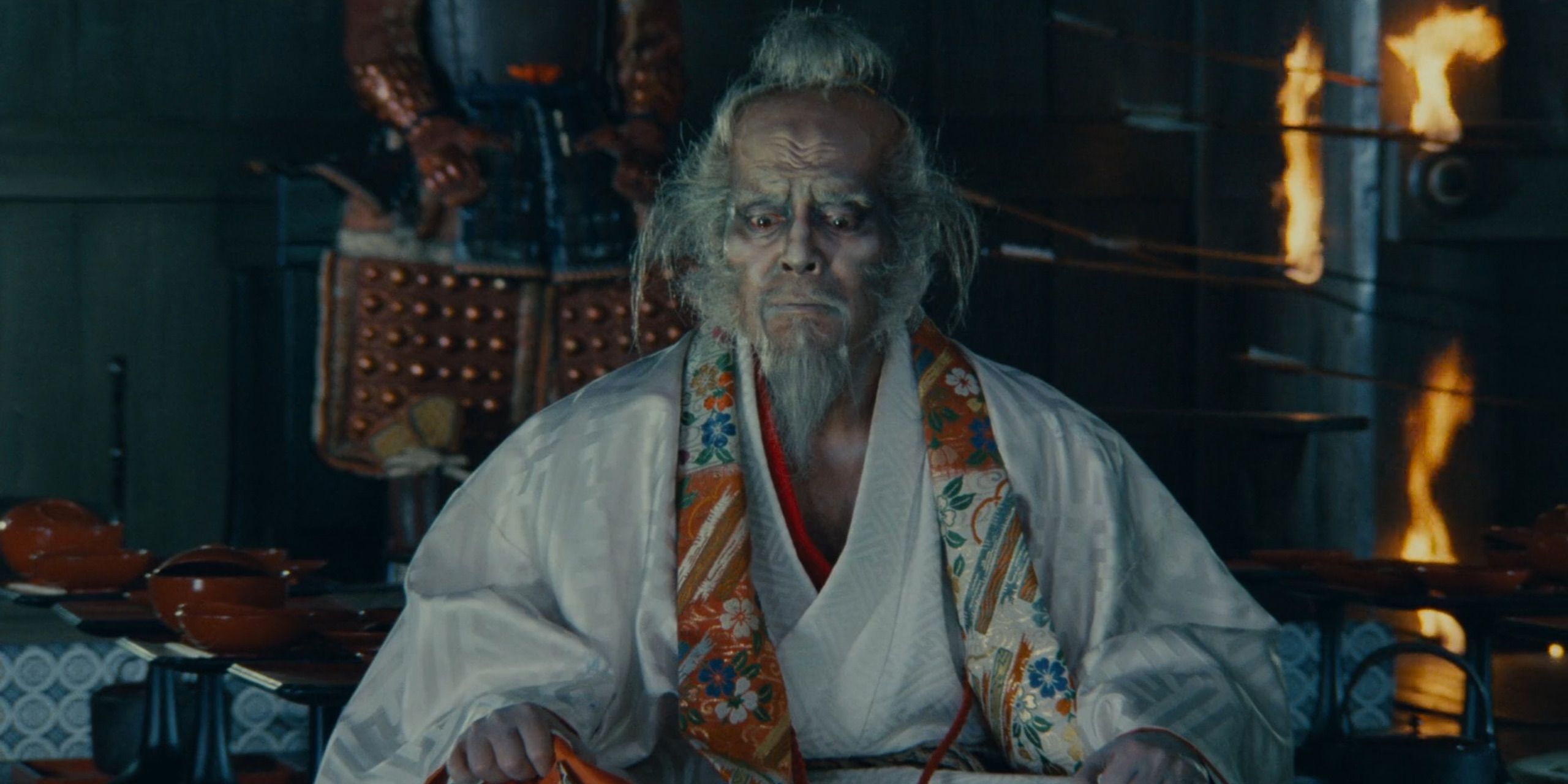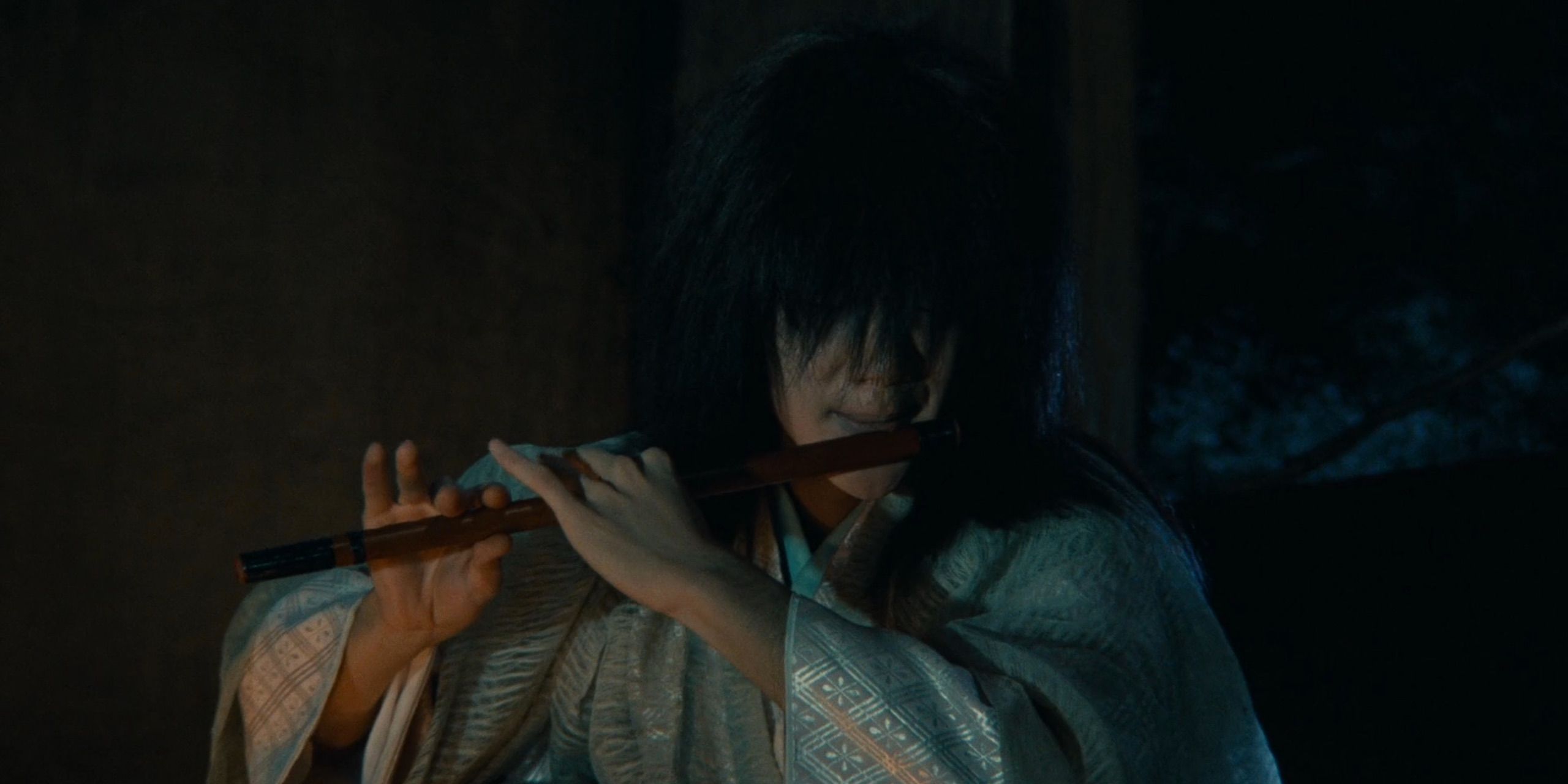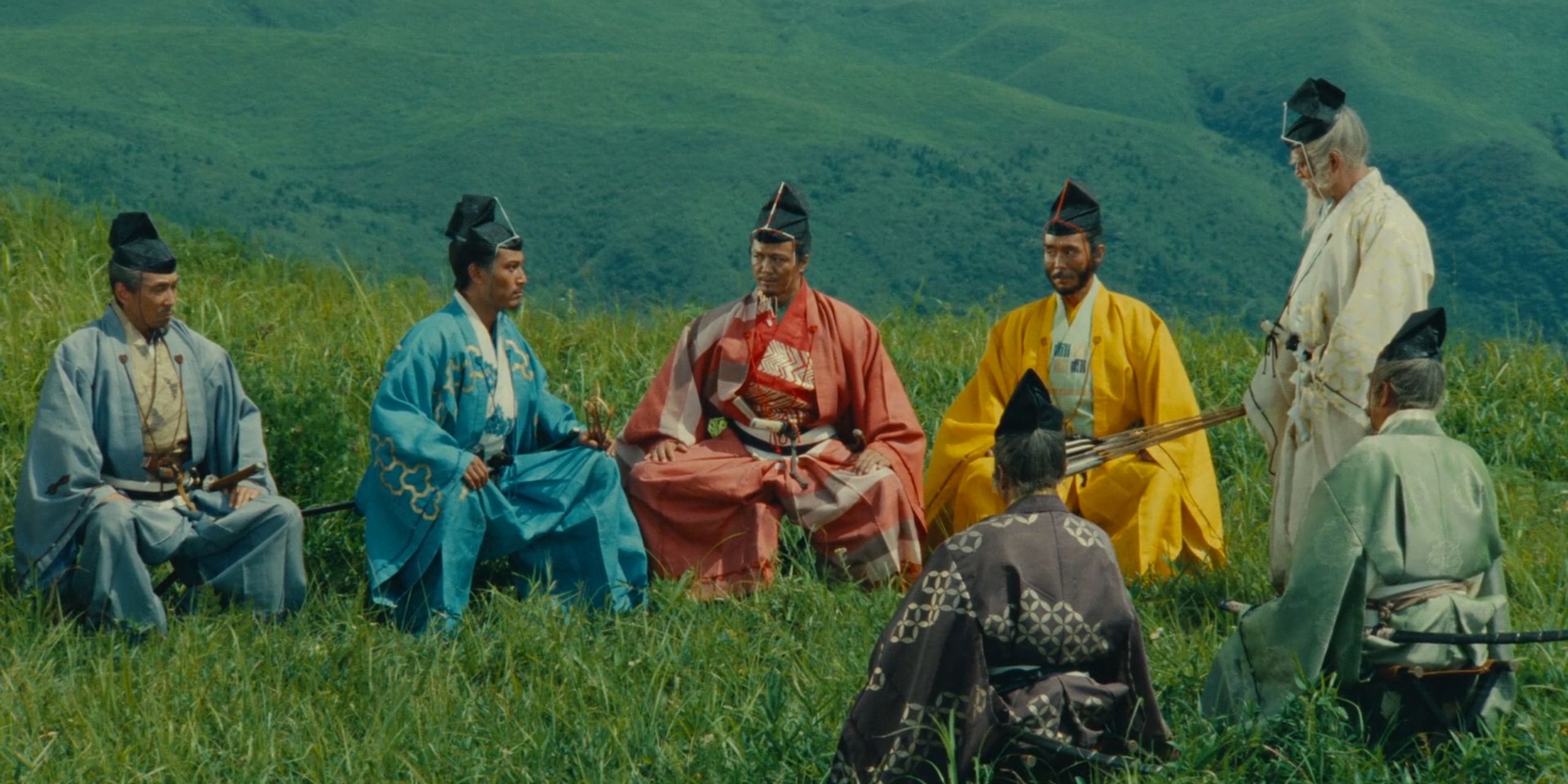The late-life masterpiece from Kurosawa delivers a sensual overload in its depiction of the carnage of war
The first (and only) season of FX’s Shōgun came to a close this week, with Lord Toranaga (Hiroyuki Sanada) unifying control of Japan, though at a steep cost. Toranaga is closely based on Tokugawa Ieyasu, an important figure from Japanese history who is known for unifying Japan under a strong central government, which lasted in some form for two centuries — an era known as the Tokugawa period. The period before this order was imposed, known as the Sengoku period, is characterized by frequent warfare between local warlords and land barons (known as daimyō). For a great look at a Sengoku period drama, and to fill the hole left by the absence of Shōgun, look no further than Ran, the brutal, sweeping epic from Akira Kurosawa.
What is ‘Ran’ About?
Ran is frequently summed up as Akira Kurosawa’s adaptation of Shakespeare’s tragedy, King Lear. Like King Lear, it tells the story of a ruler with three heirs. Ichimonji Hidetora (Tatsuya Nakadai) has built himself up to be a great lord, adding to his territory through violence, war, and betrayal. And, as he nears the end of his life, he gets to see these same forces tear apart everything he’s built. The title, Ran, can be translated as chaos, or tumult.
One day, picnicking after a hunt with his sons and neighboring lords, the aging Hidetora drifts asleep. Waking in terror from a dream of great emptiness, Hidetora is overcome with sentimental love for the children whom he never showed much affection towards in his prime. He decides, impulsively, that it’s time to divide up his kingdom, and step down as head of the Ichimonji family. His sons, usually referred to as Toro (Akira Terao), Jiro (Jinpachi Nezu), and Saburo (Daisuke Ryu) – names which literally mean eldest son, second son, and third son – are given his first, second, and third-best castles, and Toro is placed at the head of the household. Saburo, the kindest of the sons, insists that his father’s plan will backfire; because the three of them have been raised to be calculating and ruthless, they will turn on each other. He is banished for his impertinence.
Saburo turns out to be correct. Once Toro has been given power, his wife, Lady Kaede (Mieko Harada), urges him to use it against Hidetora, stripping him of his royal guard. Kaede is not merely a social climber, though. Her family was slain by Hidetora in his climb to power, and now that he’s vulnerable, she’s eager for revenge. Hidetora is humiliated by Toro’s lack of deference, and retreats to live with Jiro. But at the second castle, he finds himself equally unwelcome. He is finding out that the deference others have shown him was only out of fear of his power.
‘Ran’ Makes a Spectacle of War and Conquest




The budget Kurosawa raised for Ran made it the highest-budget film in Japanese history and in Kurosawa’s career. He spent that money delivering a great, old-fashioned spectacle, with hundreds of extras mounted on nearly as many horses. Kurosawa wedged his way into historic locations that had never been filmed at before (a true sign that a director is possessed of a burning vision. Emi Wada won an Academy Award for Best Costume Design for the film’s iconic wardrobe, which took years to fabricate. And of course, there are the film’s colors, primarily (no pun intended) the yellow, red, and blue colors of the three sons’ wardrobes, and of the banners of their armies. These are the colors with which Kurosawa paints the plains and hillsides surrounding Mount Aso, Japan’s largest active volcano, as the brothers descend into war.
After Hidetora is thrown out by his second son, he is banished from his territory. With his retinue, he takes refuge in the Third Castle – the castle of his third son, whom he had previously exiled. Here, the armies of Toro and Jiro lead an assault, and Hidetora makes his last stand as a great lord. It’s only the middle of the film, but the Siege of the Third Castle is one of the most overpowering depictions of the carnage of war in film history. Though sensual and exhilarating portrayals of battle such as this one are often thought of as glorifying war, it’s also true that you spend the rest of the movie (as you do following the Normandy scene in Saving Private Ryan) hoping nothing like this ever happens again. But even after Hidetora is defeated, and driven out to wander the wilderness with his jester and his last remaining loyal servant, there is more violence to come.
How Similar Is ‘Ran’ to ‘King Lear’?

In many ways, Ran follows the plot of King Lear quite closely. In both, an aging lord attempts to divide his kingdom among three heirs (in King Lear, they are daughters). The youngest child rejects the terms of their inheritance and is banished. The two oldest children pay lip service to their father, only to later cast him out of their castles, one at a time. The patriarch loses his senses, wandering lost through fields, accompanied by his fool, before an attempt to set things right by outside forces leads to a final reckoning. Where it deviates from the plot, Ran frequently recycles elements of King Lear into new contexts. An innocent person has their eyes gouged out. An insider schemes against the family to escalate the conflict. You could say that Ran has all the necessary King Lear “canon events.” (I’m not saying that you should say it, but you could.)
But the differences are important to appreciate as well.Kurosawa’s original inspiration for the film was not King Lear, but the Japanese legend of Mōri Motonari, the Sengoku period daimyō famous for having three loyal and talented sons. Kurosawa wanted to invert that story to make the sons terrible. The most relatable moment in the film comes when Saburo rejects Mori’s fabled “lesson of the three arrows.” According to the legend, Motonari presented his sons with three arrows to demonstrate how, though fragile on their own, held together, they are unbreakable. Saburo breaks all three arrows together over his knee.
Kurosawa instrumentalized King Lear as the anti-Motanari because he wanted to subvert the conventional wisdom of the world in a way that a Japanese audience would recognize. Ran is intended as an anti-war film, and this relates to the most frequently noted difference between Ran and King Lear. While Lear is depicted as a vain fool, whose worst mistake is to blindly trust in the love of his horrible daughters, Ran’s Hidetora is a formerly brutal warlord who deserves all the punishment he gets. As Chris Marker notes in A.K., his incredible behind-the-scenes documentary about the making of Ran, “It is King Lear, yet it is not King Lear. More like Lear’s echo.” Ran represents Kurosawa’s singular vision.





